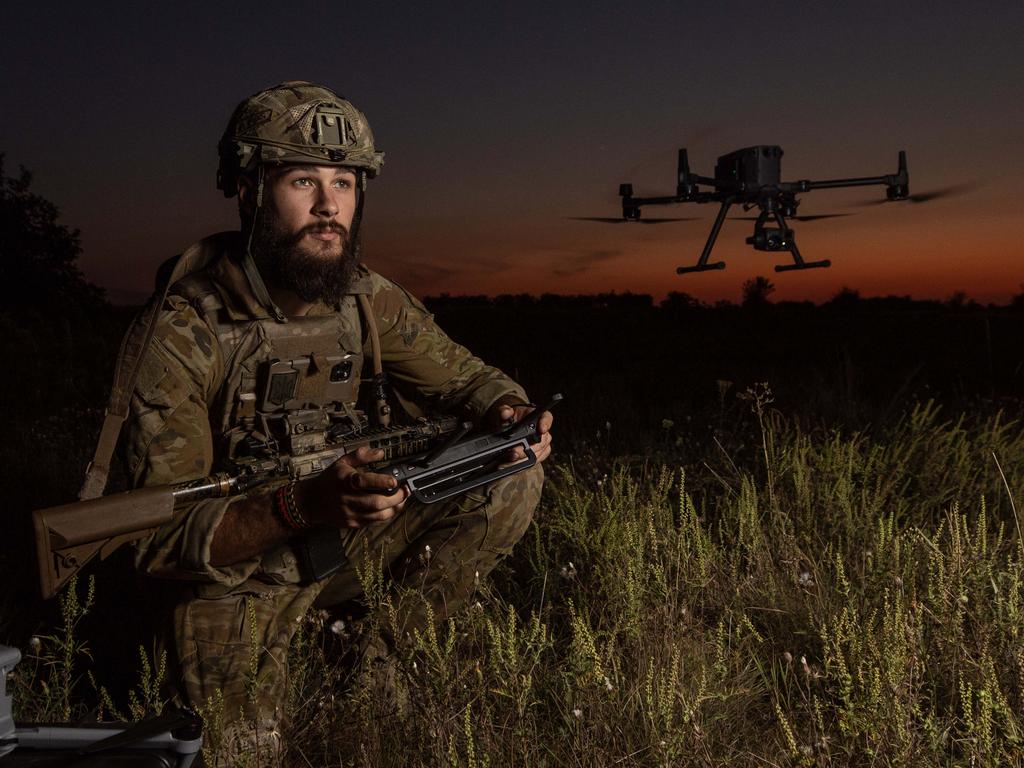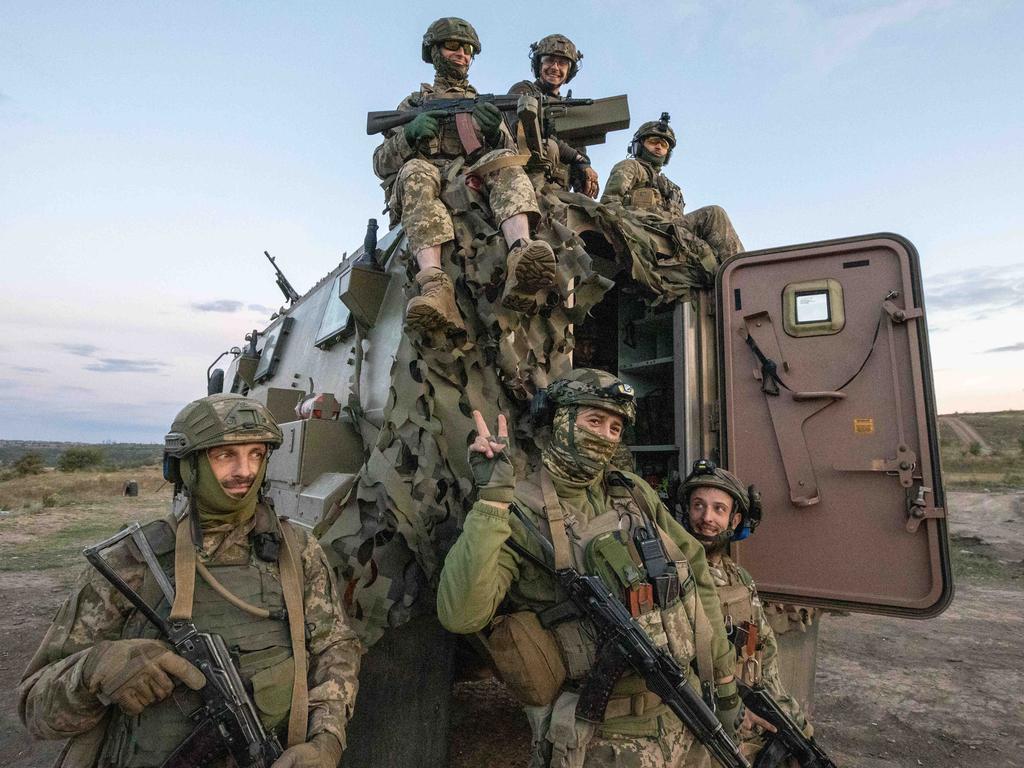Australian doctor Craig Jurisevic exposes horrors of Russian attack
Damning evidence has emerged confirming the Russian military used outlawed flechettes in its attack against civilians at a Ukrainian market.

Damning evidence has emerged confirming the Russian military used outlawed flechettes – tiny steel nails with barbed tail fins deemed illegal by the International Criminal Court – in its attack against civilians at a Ukrainian market that claimed 18 lives and left 55 people injured.
The Australian has obtained photographs and video from inside Ukraine showing the shocking impact of the flechettes, which had been placed inside missiles used by Russia in its September 6 attack on the busy market in the city of Kostyantynivka.
Missiles filled with flechettes were also used in Russian follow-up attacks on ambulances tending to injured soldiers and civilians, bolstering pleas from the Ukrainian military for the Australian government to provide armoured ambulances in addition to Bushmaster vehicles already given.
The images were obtained by Adelaide cardiothoracic surgeon Dr Craig Jurisevic, who has spent more than six months in Ukraine training medicos and defence personnel in conflict zone trauma surgery and operating on wounded soldiers and civilians.
One of the medicos trained by Dr Jurisevic is believed to have died in the market attack.
Dr Jurisevic said the impact of the market bombing was made more horrific by the use of flechettes, meaning “little arrows” in French, which were invented during World War I.
One photograph obtained by Dr Jurisevic from his colleagues in Ukraine shows dozens of perforations in a steel wall, behind which two civilians were attempting to hide but lost their lives.
“Flechettes can be described as short pointed nails with tail fins,” Dr Jurisevic told The Australian.
“They are placed in their thousands in missiles and artillery rounds and indiscriminately kill or maim anyone within a 300m radius. They are specifically forbidden by the Geneva Conventions for this reason.
“The Russians use these against ambulance vehicles at the front and all along evacuation routes to the cities along the front. The most recent example was the missile attack on the market.”
Dr Jurisevic has received correspondence from Ukrainian military commander Colonel Vsevolod Pavlikov writing to the Australian Defence Force requesting armed ambulances as a matter of urgency.
“Our efforts to repel Russian forces on our front line have resulted in, and continue to result in, significant numbers of casualties, Colonel Pavlikov writes.
“Our military and civilian medical staff continue to work tirelessly under extremely difficult circumstances to provide the highest standard of care to our injured servicemen and servicewomen.
“One major deficiency in the care of our injured soldiers is the availability of purpose-designed frontline military ambulance vehicles. There is a significant deficiency in light-armoured military evacuation vehicles to evacuate soldiers from the point of injury … should this request be successful, the vehicles will be immediately utilised to facilitate the timely evacuation of our injured service personnel … to our Role 1 and 2 units at the front line.”
The federal government is aware of the request. A spokesperson for Defence Minister Richard Marles said the commonwealth would continue to work with Ukraine and consider its needs.
“Australia remains steadfast in its commitment to support Ukraine’s defence against Russia’s illegal and immoral war,” the spokesperson said. “As the Deputy Prime Minister has said, Australia continues to work with the Ukrainian government to determine what support we can provide to enable Ukraine to end this conflict on its own terms.”
The request for armoured ambulances comes as Ukraine is also pleading with the federal government to provide Hawkei light armoured patrol vehicles, despite concerns over their braking systems.
Dr Jurisevic said that from his six months of service in Ukraine the need for better ambulance vehicles was obvious, saying many injured people were dying due to being transported in passenger and transit vehicles that were not fit for purpose.
These include old Pajeros and Transit vans, in some cases two-wheel drive vehicles, which often became bogged and were subject to Russian attacks.
Dr Jurisevic said there also was new visual evidence confirming Russia was using outlawed white phosphorous munitions over civilian areas.
“White phosphorous is released as small particles delivered by artillery or missiles,” he said. “They are detonated above their target, releasing a shower of white burning shards. They appear like ‘waterfall’ fireworks. The particles burn through clothing, skin, fat and muscle to bone within minutes. It is said to be one of the most excruciatingly painful injuries known.”








To join the conversation, please log in. Don't have an account? Register
Join the conversation, you are commenting as Logout